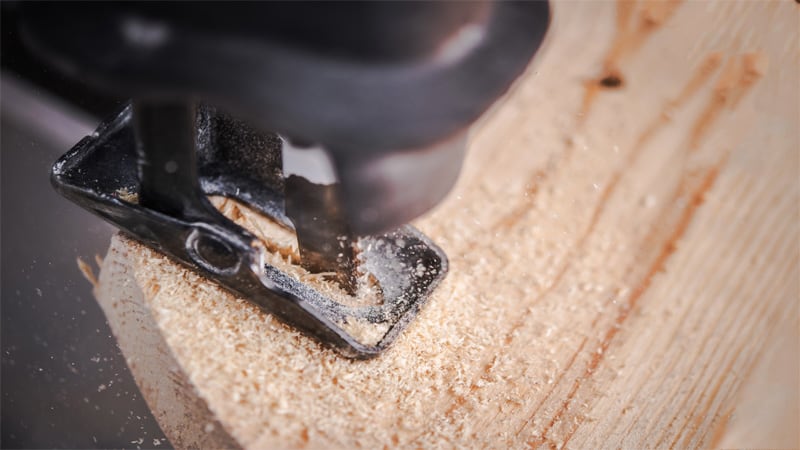7 Reciprocating Saw Uses: What Can You Use it For?
TheToolGeeks.com is a participant in the Amazon Services LLC Associates Program and other affiliate advertising programs. We may earn from qualifying purchases. (Learn More).
Reciprocating saws are one of the most widely-used power saws out there. Reciprocating saws are also known as recip saws or Sawzall are handheld power tools that are used to cut different materials ranging from plastic to wood. The reciprocating saw is common because it’s very easy to use and it is very versatile too.
The uses of the reciprocating saw span across fields and functions. Plumbers, electricians, carpenters, and DIYers all use the reciprocating saw for different tasks. The shape, structure, and weight of the power tool make it possible for the reciprocating saw to be used for cutting different materials.
So, what can the reciprocating saw be used for? That is what this post is going to examine. When you are done reading this post, you will become familiar with the different uses of a reciprocating saw as well as some uses that you didn’t even know about. But first, let’s check out what a reciprocating saw is.
Jump To Page Contents:
How Does the Reciprocating Saw Work?
The recip saw makes cuts with a reciprocating motion. This means that the blade of the recip saw moves in a back-and-forth motion rapidly. The rapid movement of the blade is what makes it possible for the saw to make cuts on even the toughest of materials.
The reciprocating saw is designed with a motor that is located inside the power tool. The motor is responsible for generating power in the saw to move the blade. The reciprocating saw gets its name from the movement of the blade. The reciprocating motion of the blade is why the saw is called a reciprocating saw.
The recip saw uses the same cutting motion like a knife or a regular saw. The difference here is that with a knife of a regular saw, you will be moving the tool with your arm and the speed of the cut depends on how fast you move your arm. With recip saws, a motor in the saw is responsible for generating the required speed for the cut. Most reciprocating saws have motors that can generate a speed of up to 2700 RPM (revolutions per minute).
Some recip saws have motors that are more powerful than others. The power of the power saw is measure in amps (amperage). The more powerful the motor is, the more powerful the reciprocating saw will be. The motor also determines the speed of the saw and with recip saws, speed matters bigger recip saw blades move slower than thin recip saw blades.
This is because the thicker blades are usually heavier so they will be reciprocated slower. Thin blades on the other hand aren’t heavy so the motor can move them at speeds of over 2500 RPM. So that’s how the recip saw works.
Now let’s check out some of the uses of the reciprocating saw.
What Is the Reciprocating Saw Used for?
Reciprocating saws are versatile power saws. The reason for the versatility of the saw is because of the position of the blade and the fact that you can switch blades.
So all you have to do is pick out a blade that will work for your task. You can use the same reciprocating saw with different blades and for different tasks. Recip saws are mostly used for
1. Making Straight Cuts
virtually every power saw is used for making straight cuts. The reciprocating saw excels with this function. The saw can be used to make straight cuts on different materials such as plastic, wood, and even metal.

As long as you attach the right blade, you can make straight cuts on almost any material with a reciprocating saw. You can also use the reciprocating saw to make curved cuts. The position and build of the blade make it easy to cut curves and edges on wood.
You can use a pencil to draw the curved line and use the recip saw to follow that line. This is possible because the recip saw is small and lightweight. Most power saws will be too heavy and big for such tasks.
Related Read — How To Make Straight Cuts with a Reciprocating Saw?2. For Pruning Trees
Reciprocating saws are also used for pruning trees and large branches. If you have a tree in your yard or your compound, then you will occasionally need to prune the branches to control the growth of the tree.

Reciprocating saws make it easy to prune and cut branches and small trees. The cordless or battery-powered model of the reciprocating saw is even more equipped for pruning trees and branches.
The battery-powered model is very mobile and you can do a lot of pruning with it since you don’t need to plug it into any wall outlet or power source.
Related Read — Cutting Tree Branches With a Reciprocating Saw?3. Rough Cutting
Recip saws are small and lightweight but they pack a good deal of power. The motor in the reciprocating saw is capable of generating a speed of up to 2700 RPM.
Due to the powerful motor, the recip saw is capable of making rough cuts on materials. To make rough cuts on materials, a thick blade is usually fixed into the chuck of the recip saw.
Thick blades have fewer teeth and can be of varying lengths. The thicker blades are suited to making tough cuts. For instance, to cut down stock during construction.
4. For Cutting Holes in Material
most people don’t know this but reciprocating saws are one of the few power saws out there that can cut holes in materials. Though this is usually a task for experienced professionals, it is still a possibility with the reciprocating saw.
The saw can be pushed against a surface so that the blade protrudes into the material and then a circle or hole can be cut into the material.
This might be needed for interior decoration or during construction. The other handheld power saw that is capable of cutting holes and circles in materials is a jigsaw so this function puts the recip saw up there with other power saws.
5. For Resawing Small Logs
A main part of woodworking is resawing logs and wood. Logs don’t come ready-made for use. You usually need to cut down the logs into smaller sizes and the needed dimension.
A recip saw can help with that. You can use a recip saw to chop and cut logs into smaller sizes. You can also use a reciprocating saw to cut wood chunks to be used in the fireplace. So if your 2×4 log is too big for the task, you can use a recip saw to resaw it.
Related Read — How To Cut Wood With a Reciprocating Saw?6. For Cutting in Tight Spaces
The position and structure of the blade also make it possible to reach tight spaces with the recip saw. This is why plumbers and electricians use the reciprocating saw.
The saw can cut wires and pipes in tight spaces easily. Most power saws wouldn’t give you that luxury. The recip saw is a go-to power tool for most plumbers because the blade of the recip saw makes it possible to cut pipes and bars in tight corners.
Plumbers and electricians work in tight spaces all the time. Pipes and wires are usually run inside the walls or in tight spaces so there is usually the need for a power saw that can reach such tight spaces.
7. For Demolition Work
the reciprocating saw is usually called the demolition power saw. The reciprocating saw is capable of tearing down walls and destroying materials.
If you need to tear down the walls before rebuilding or refinishing them, then you can use a recip saw. The reciprocating saw is great for demolition work. Other uses of the reciprocating saw include cutting frames, sharpening objects, and the likes.
Related Read — How To Cut Metal With a Reciprocating Saw?Conclusion
the reciprocating saw is a very versatile power tool and it has lots of uses. The position of the blade and the lightweight of the power tool give the power tool its biggest advantages.
The saw can cut any material as long as you attach it with the right blade. The saw is also user-friendly so if you are looking for a saw to buy as a beginner, you can get the recip saw.
You should however choose wisely when picking a recip saw. Pick a saw that is mobile, efficient, and affordable. There are dozens of recip saw manufacturing companies out there ranging from Makita to Dewalt, so choose wisely. You should also follow all the instructions guiding the use of the recip saw.
So, there you have it. I hope you found this post useful. If you have any questions or comments about the topic, please leave them below and I’ll attend to them as soon as possible. Have a nice day.
Amazon and the Amazon logo are trademarks of Amazon.com, Inc, or its affiliates.

